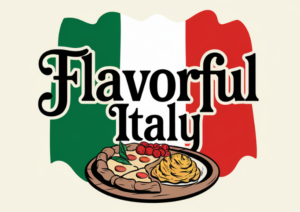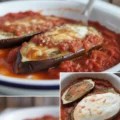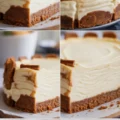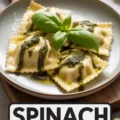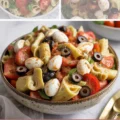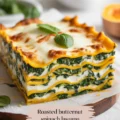I coax lemon, butter, Parmigiano-Reggiano and mascarpone into wide ribbons of pasta in my Lemon Pappardelle. Zest, lemon juice and cream meet reserved pasta water to form a glossy sauce, while a touch of shallot and parsley adds lift. Read on for clever technique and small tricks that ensure success.
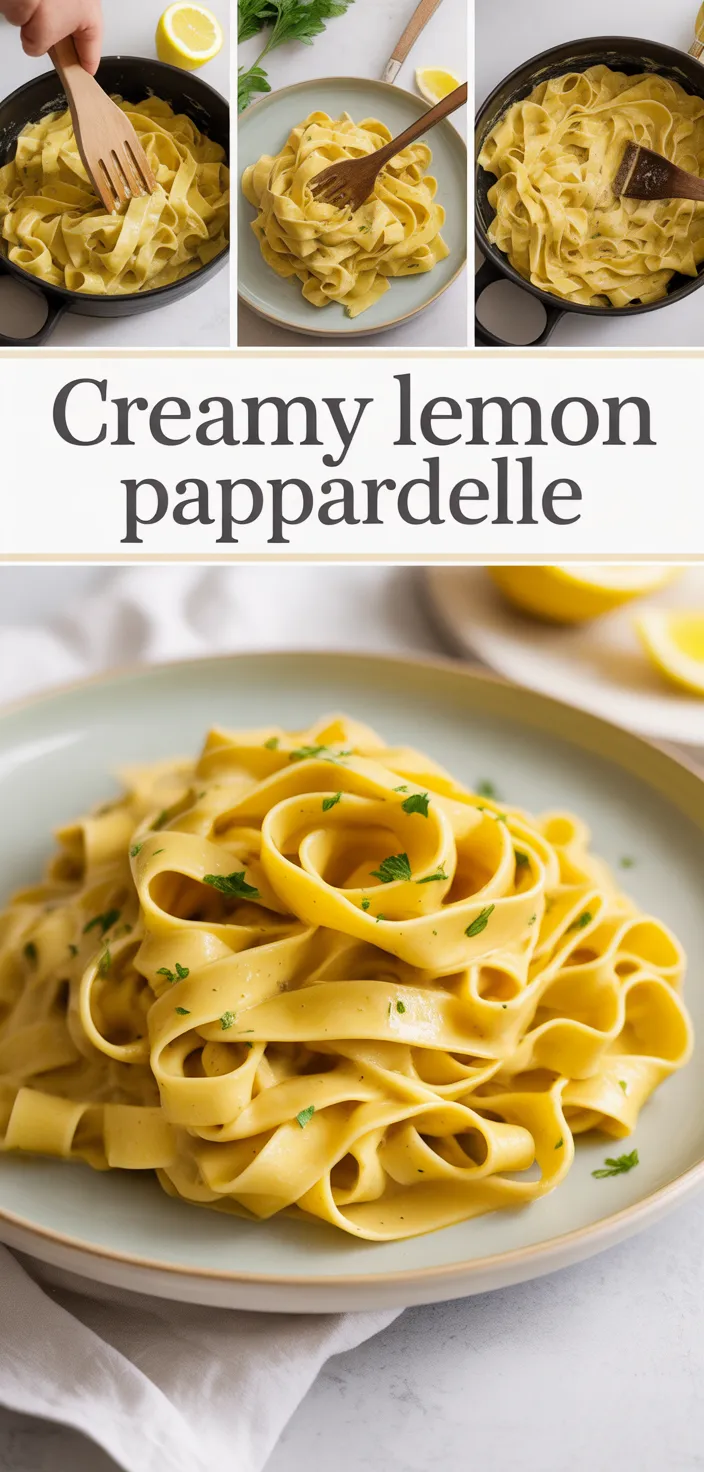
I fell for this Lemon Pappardelle the first time I tossed hot 12 oz dried pappardelle with 3 tbsp unsalted butter, 1 cup heavy cream and a generous cup of finely grated Parmigiano-Reggiano. Zest of 2 lemons and the juice of 1 large lemon wake the whole thing up, and a splash of the 1/2 cup reserved pasta cooking water pulls the sauce into something almost velvet.
It’s simple yet surprising, part Fresh Pappardelle comfort and part Summer Lemon Pasta brightness, perfect as a Romantic Pasta Recipes pick. I even stir in 2 tbsp mascarpone sometimes, because I like a cheat.
Why I Like this Recipe
– I like the way it tastes bright and zippy but not too sour
– I love how the sauce gets all silky and glossy and just clings to every bite, makes it feel fancy
– I like that it comes together fast so I can make something impressive on a weeknight
– I enjoy that it’s forgiving, if it starts to get grainy or weird there’s usually a quick trick to fix it
Ingredients
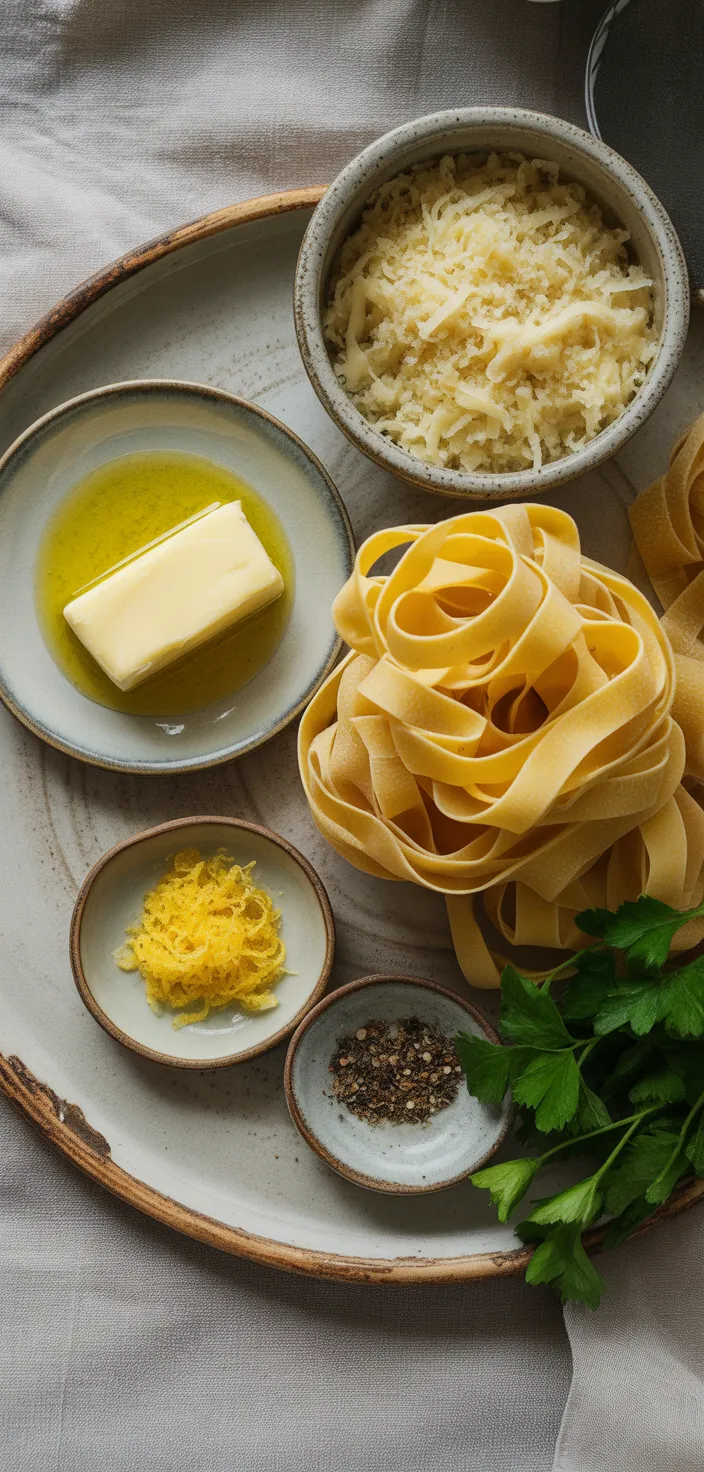
- Wide ribbons give carbs and some protein, hearty, holds sauce well, comfort food.
- Adds rich fat and flavor, boosts creaminess, not really healthy in large amounts.
- A little adds fruitiness and healthy monounsaturated fats, lighter then butter.
- Makes sauce silky, high in fat and calories, small amounts are very satisfying.
- Grated cheese gives umami, salt and protein, melts into the sauce beautifully.
- Zest gives bright oils, juice adds sour acidity, balances richness and tastes fresh.
- Optional for extra silkiness, adds mild tang and extra fat, use sparingly.
- Starchy water thins sauce, helps it cling, no extra seasoning needed.
- Herbs add freshness, tiny fiber boost, bright color and subtle herbiness.
Ingredient Quantities
- 12 oz (340 g) dried pappardelle pasta
- 3 tbsp unsalted butter
- 1 tbsp extra virgin olive oil
- 1 cup (240 ml) heavy cream
- 1 cup (90–100 g) finely grated Parmigiano-Reggiano
- Zest of 2 lemons (about 2 tsp)
- Juice of 1 large lemon (about 2–3 tbsp)
- 1/2 cup (120 ml) reserved pasta cooking water, plus more as needed
- Kosher salt for the pasta water and seasoning, plus more to taste
- Freshly ground black pepper to taste
- 1 small shallot, finely minced (optional)
- 2 tbsp mascarpone or cream cheese for extra silkiness (optional)
- 2 tbsp finely chopped fresh parsley or basil for garnish (optional)
How to Make this
1. Fill a large pot with water, bring to a rolling boil, salt it generously like the sea, then add 12 oz (340 g) dried pappardelle and cook until just al dente per package directions; before you drain scoop out and reserve 1/2 cup (120 ml) of the pasta cooking water and keep a little extra just in case.
2. While the pasta cooks, heat a large skillet over medium; add 3 tbsp unsalted butter and 1 tbsp extra virgin olive oil, swirl until butter melts and starts to foam; if you want more flavor add 1 small finely minced shallot now and sauté 1 to 2 minutes until soft but not brown.
3. Pour in 1 cup (240 ml) heavy cream, bring to a gentle simmer, lower heat and stir in the zest of 2 lemons (about 2 tsp); if you like an extra silky texture stir in 2 tbsp mascarpone or cream cheese now until smooth.
4. Let the cream gently thicken for a minute, keep the heat low so it does not boil hard or split, then remove pan from direct heat before adding the cheese.
5. Add 1 cup (90–100 g) finely grated Parmigiano-Reggiano a handful at a time, stirring or whisking constantly so it melts into the cream and emulsifies; if the sauce looks too thick add some of the reserved pasta water a tablespoon at a time to reach a glossy, silky consistency.
6. Stir in the juice of 1 large lemon (about 2–3 tbsp), taste and season with kosher salt sparingly (cheese is salty) and freshly ground black pepper to your liking.
7. Add the drained pappardelle to the sauce, use tongs to toss and fold for 30 to 60 seconds so every ribbon is coated; if the sauce seems tight or clumpy add small splashes of reserved pasta water while tossing until it clings smoothly.
8. If the sauce breaks or looks grainy, take the pan off the heat and whisk in a little cold butter or another tablespoon of mascarpone, or a splash more pasta water; this will bring the sauce back to silky, glossy life.
9. Divide into warmed bowls, grate extra Parmigiano-Reggiano on top, finish with a sprinkle of finely chopped fresh parsley or basil and extra lemon zest if you like, and crack a final twist or two of black pepper before serving immediately.
Equipment Needed
1. Large pot (6 quart or bigger) for a rolling boil so the pasta has room, and to scoop out the cooking water later
2. Colander to drain the pappardelle and catch that reserved pasta water
3. Large skillet or deep sauté pan, stainless or nonstick, big enough to toss the ribbons without crowding
4. Tongs, long ones preferably, to lift and toss the pasta gentle so it dont tear
5. Whisk plus a silicone spatula or wooden spoon — whisk to keep the cheese from clumping, spatula to fold the pasta
6. Measuring cups and spoons and a liquid measuring cup to set aside 1/2 cup of pasta water
7. Microplane zester and/or fine cheese grater for lemon zest and finely grated Parmigiano-Reggiano
8. Small heatproof bowl or cup to hold the reserved pasta water and any extra mascarpone, plus warmed serving bowls for plating
FAQ
Pappardelle Al Limone (Creamy Lemon Pasta) Recipe Substitutions and Variations
- Pappardelle: swap with fettuccine or tagliatelle — they hug the creamy sauce the same way, same cooking time roughly.
- Heavy cream: use 3/4 cup whole milk plus 1/4 cup melted butter for similar fat, or half and half for a lighter sauce (stir gently so it doesn’t break).
- Parmigiano-Reggiano: substitute Pecorino Romano for more tang and salt, or Grana Padano for a milder, similar texture.
- Mascarpone/cream cheese: use crème fraîche or full fat Greek yogurt thinned with a splash of milk for silkiness and a bit of tang, or blend ricotta smooth if you want a lighter feel.
Pro Tips
1. Undercook the pappardelle by about a minute, and save more pasta water than you think youll need, I keep around 3/4 cup just in case, use it to loosen the sauce a tablespoon at a time so you dont dilute the flavor.
2. Always grate Parmigiano fresh and cold, pre-shredded cheese has anti caking stuff that makes the sauce grainy, a fine grate melts faster and makes a silkier emulsion.
3. Watch the heat, keep the cream low and take the pan off the heat before you add the cheese, whisk constantly to emulsify; if it goes grainy or breaks toss in a little cold butter or a spoonful of mascarpone and whisk it back together.
4. Add lemon juice slowly and taste as you go, zest early so its flavor blooms in the fat but the juice is best at the end or it can make the sauce tighten up, if it gets too sharp a tiny pinch of sugar or extra butter will calm it down.
5. If you need to make ahead, undercook the pasta more than usual and toss it into the sauce just before serving, or reheat gently with small splashes of hot pasta water, warm bowls help keep the dish glossy and satisfying.

Pappardelle Al Limone (Creamy Lemon Pasta) Recipe
I coax lemon, butter, Parmigiano-Reggiano and mascarpone into wide ribbons of pasta in my Lemon Pappardelle. Zest, lemon juice and cream meet reserved pasta water to form a glossy sauce, while a touch of shallot and parsley adds lift. Read on for clever technique and small tricks that ensure success.
4
servings
709
kcal
Equipment: 1. Large pot (6 quart or bigger) for a rolling boil so the pasta has room, and to scoop out the cooking water later
2. Colander to drain the pappardelle and catch that reserved pasta water
3. Large skillet or deep sauté pan, stainless or nonstick, big enough to toss the ribbons without crowding
4. Tongs, long ones preferably, to lift and toss the pasta gentle so it dont tear
5. Whisk plus a silicone spatula or wooden spoon — whisk to keep the cheese from clumping, spatula to fold the pasta
6. Measuring cups and spoons and a liquid measuring cup to set aside 1/2 cup of pasta water
7. Microplane zester and/or fine cheese grater for lemon zest and finely grated Parmigiano-Reggiano
8. Small heatproof bowl or cup to hold the reserved pasta water and any extra mascarpone, plus warmed serving bowls for plating
Ingredients
-
12 oz (340 g) dried pappardelle pasta
-
3 tbsp unsalted butter
-
1 tbsp extra virgin olive oil
-
1 cup (240 ml) heavy cream
-
1 cup (90–100 g) finely grated Parmigiano-Reggiano
-
Zest of 2 lemons (about 2 tsp)
-
Juice of 1 large lemon (about 2–3 tbsp)
-
1/2 cup (120 ml) reserved pasta cooking water, plus more as needed
-
Kosher salt for the pasta water and seasoning, plus more to taste
-
Freshly ground black pepper to taste
-
1 small shallot, finely minced (optional)
-
2 tbsp mascarpone or cream cheese for extra silkiness (optional)
-
2 tbsp finely chopped fresh parsley or basil for garnish (optional)
Directions
- Fill a large pot with water, bring to a rolling boil, salt it generously like the sea, then add 12 oz (340 g) dried pappardelle and cook until just al dente per package directions; before you drain scoop out and reserve 1/2 cup (120 ml) of the pasta cooking water and keep a little extra just in case.
- While the pasta cooks, heat a large skillet over medium; add 3 tbsp unsalted butter and 1 tbsp extra virgin olive oil, swirl until butter melts and starts to foam; if you want more flavor add 1 small finely minced shallot now and sauté 1 to 2 minutes until soft but not brown.
- Pour in 1 cup (240 ml) heavy cream, bring to a gentle simmer, lower heat and stir in the zest of 2 lemons (about 2 tsp); if you like an extra silky texture stir in 2 tbsp mascarpone or cream cheese now until smooth.
- Let the cream gently thicken for a minute, keep the heat low so it does not boil hard or split, then remove pan from direct heat before adding the cheese.
- Add 1 cup (90–100 g) finely grated Parmigiano-Reggiano a handful at a time, stirring or whisking constantly so it melts into the cream and emulsifies; if the sauce looks too thick add some of the reserved pasta water a tablespoon at a time to reach a glossy, silky consistency.
- Stir in the juice of 1 large lemon (about 2–3 tbsp), taste and season with kosher salt sparingly (cheese is salty) and freshly ground black pepper to your liking.
- Add the drained pappardelle to the sauce, use tongs to toss and fold for 30 to 60 seconds so every ribbon is coated; if the sauce seems tight or clumpy add small splashes of reserved pasta water while tossing until it clings smoothly.
- If the sauce breaks or looks grainy, take the pan off the heat and whisk in a little cold butter or another tablespoon of mascarpone, or a splash more pasta water; this will bring the sauce back to silky, glossy life.
- Divide into warmed bowls, grate extra Parmigiano-Reggiano on top, finish with a sprinkle of finely chopped fresh parsley or basil and extra lemon zest if you like, and crack a final twist or two of black pepper before serving immediately.
Notes
- Below you’ll find my best estimate of this recipe’s nutrition facts. Treat the numbers as a guide rather than a rule—great food should nourish both body and spirit. Figures are approximate, and the website owner assumes no liability for any inaccuracies in this recipe.
Nutrition Facts
- Serving Size: 268g
- Total number of serves: 4
- Calories: 709kcal
- Fat: 43.8g
- Saturated Fat: 22.3g
- Trans Fat: 0.4g
- Polyunsaturated: 2g
- Monounsaturated: 13g
- Cholesterol: 109mg
- Sodium: 500mg
- Potassium: 288mg
- Carbohydrates: 65g
- Fiber: 2.5g
- Sugar: 3g
- Protein: 20.9g
- Vitamin A: 1000IU
- Vitamin C: 7.5mg
- Calcium: 300mg
- Iron: 1.15mg
